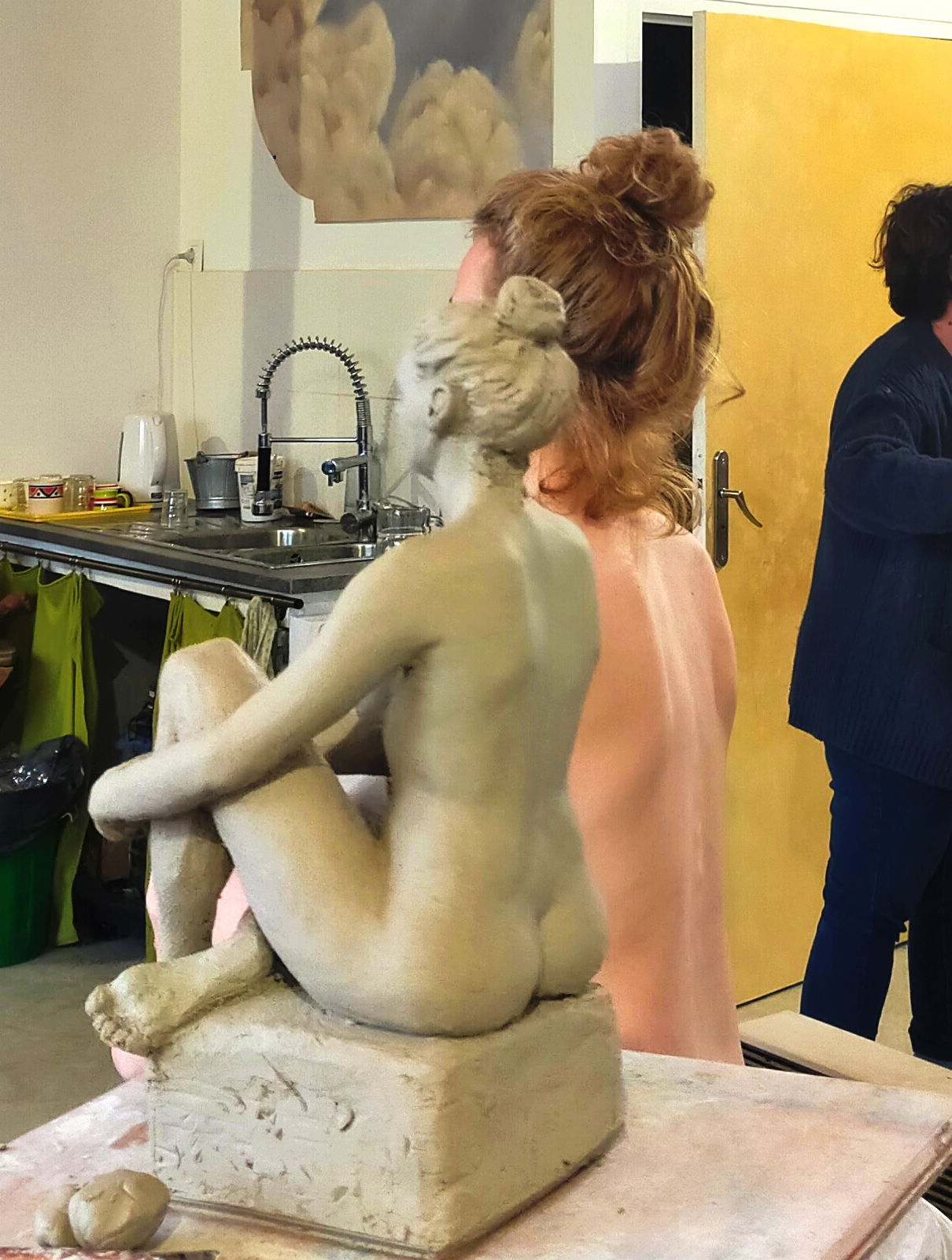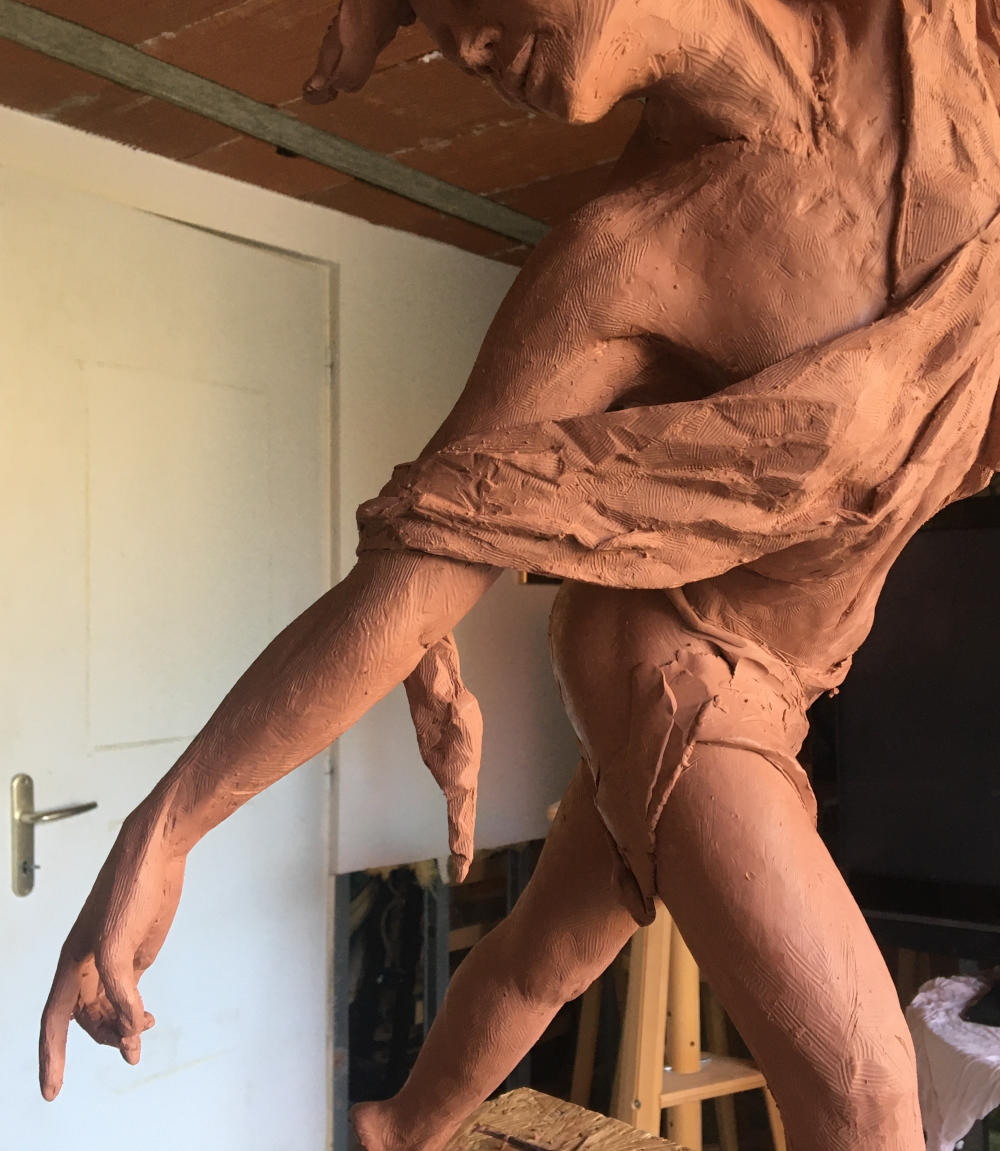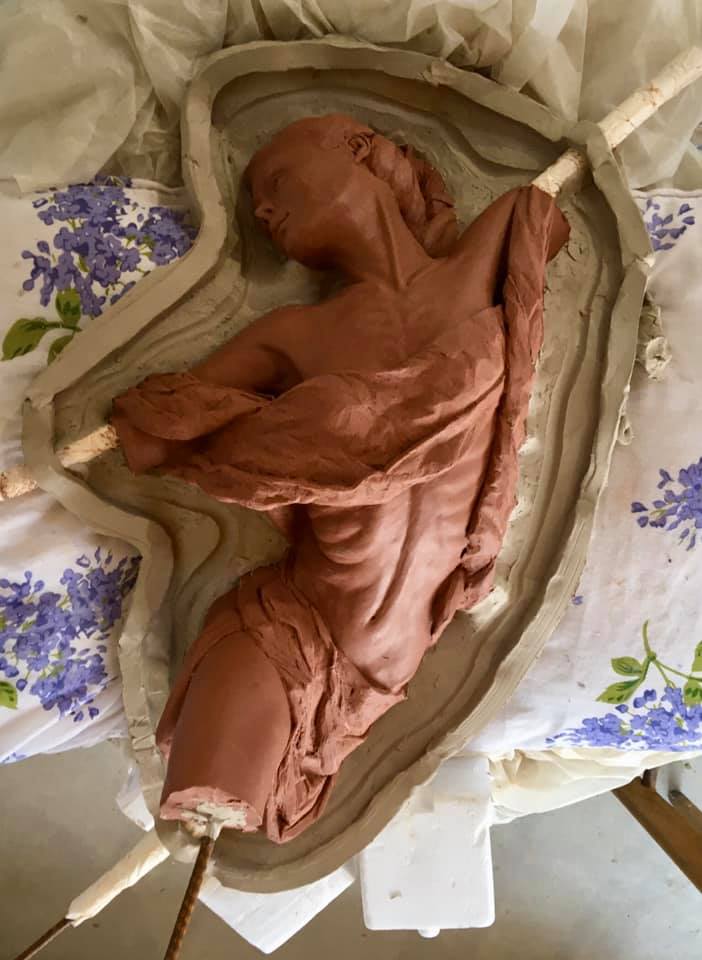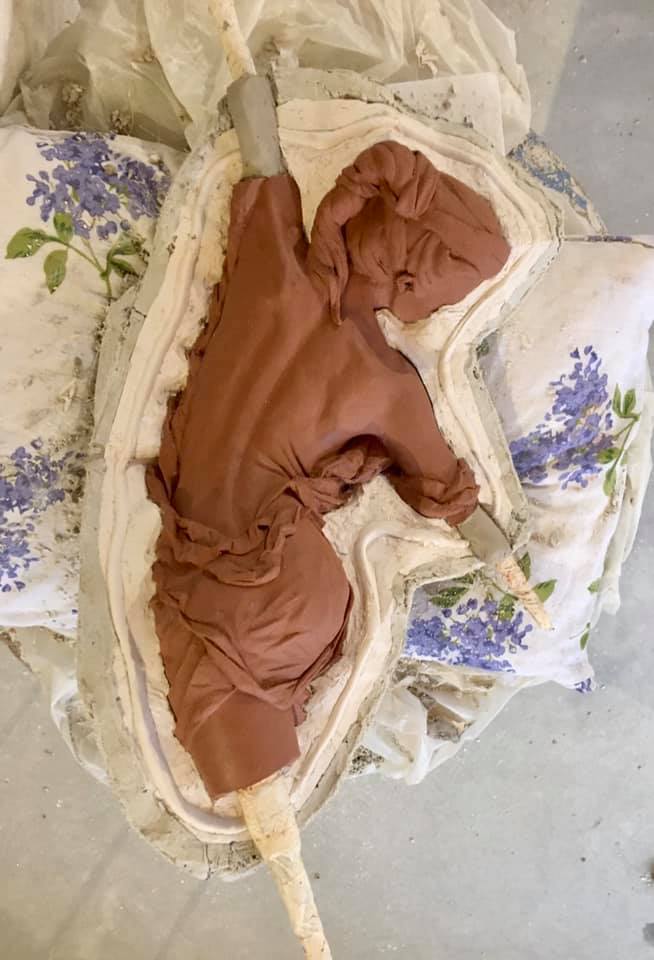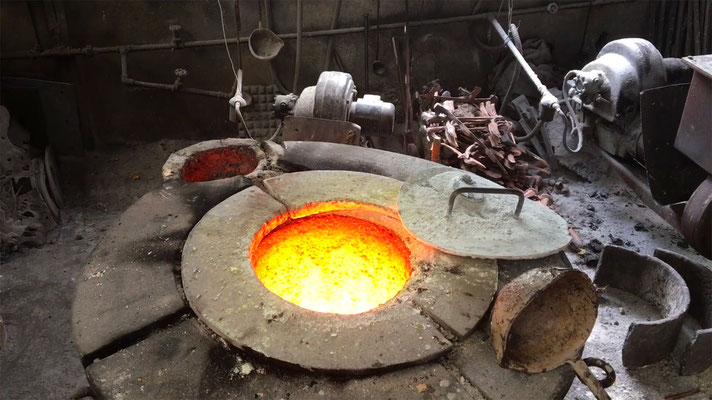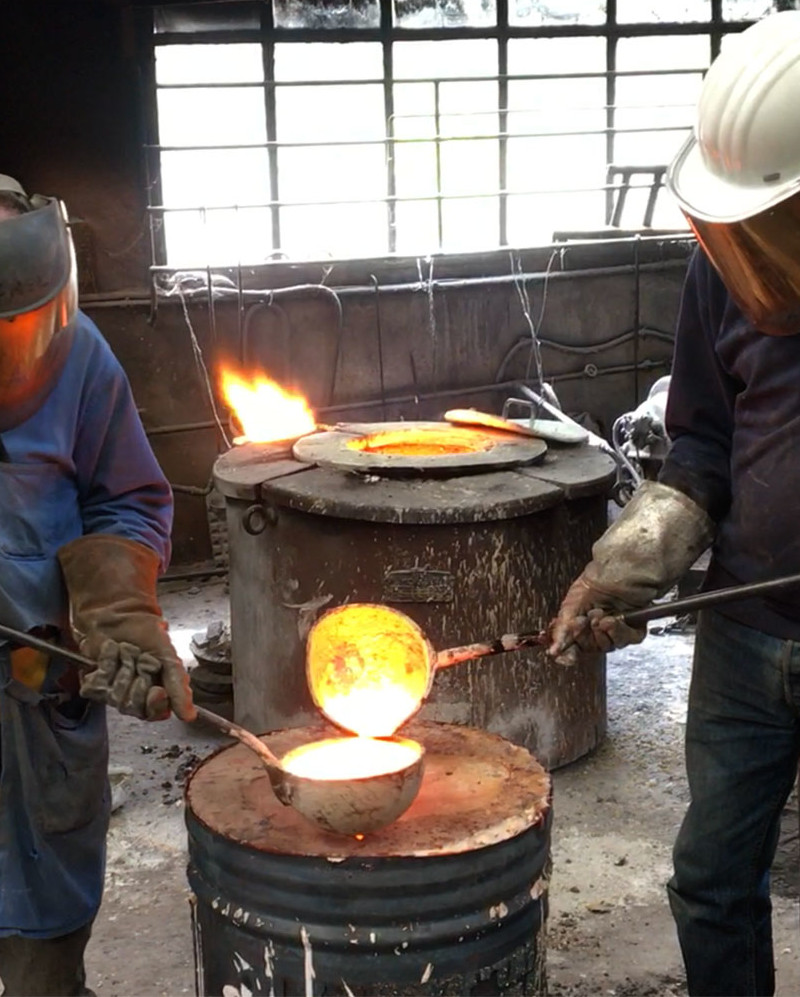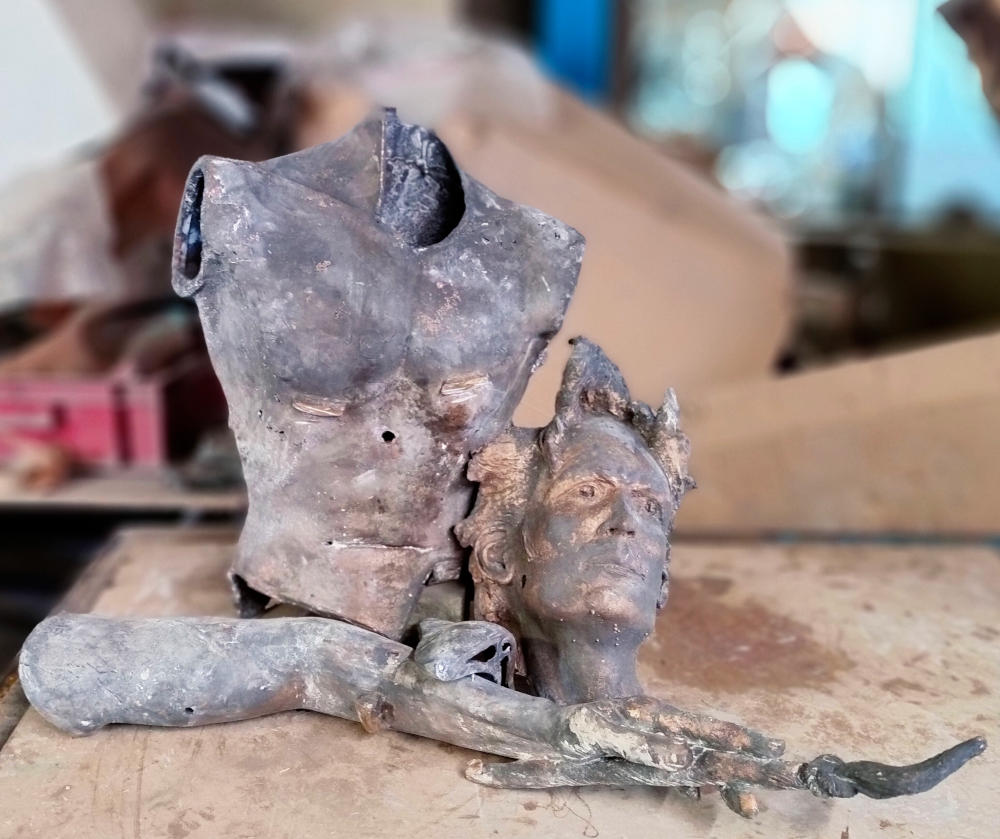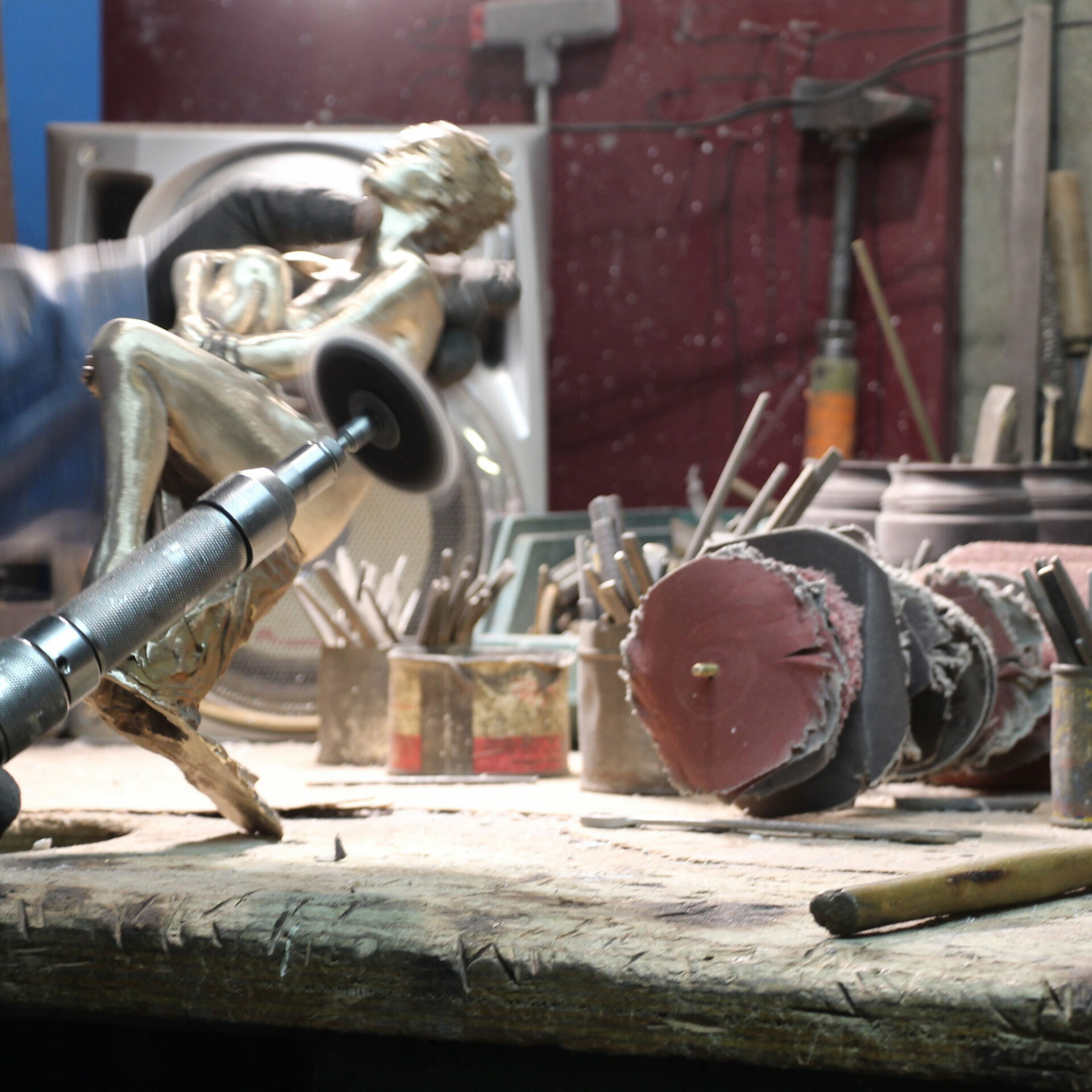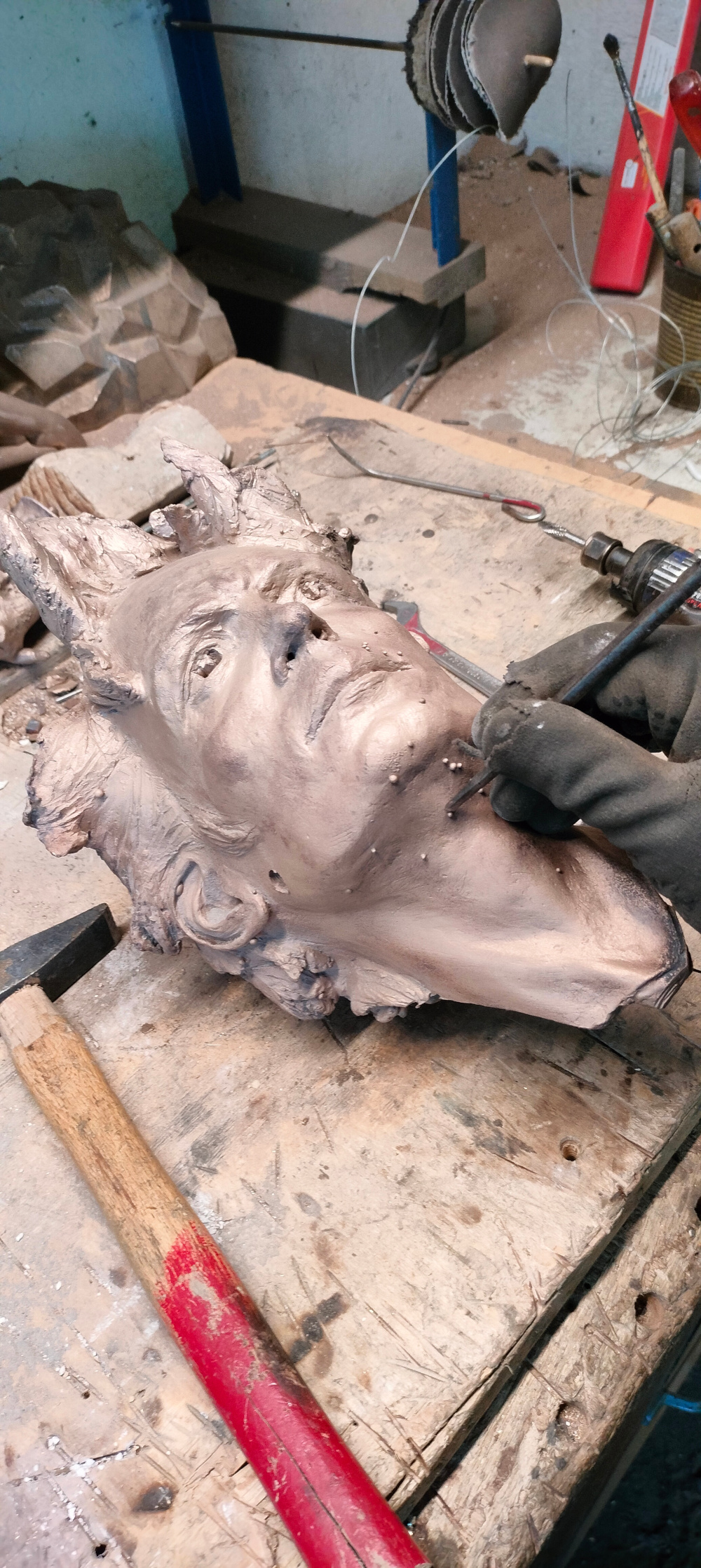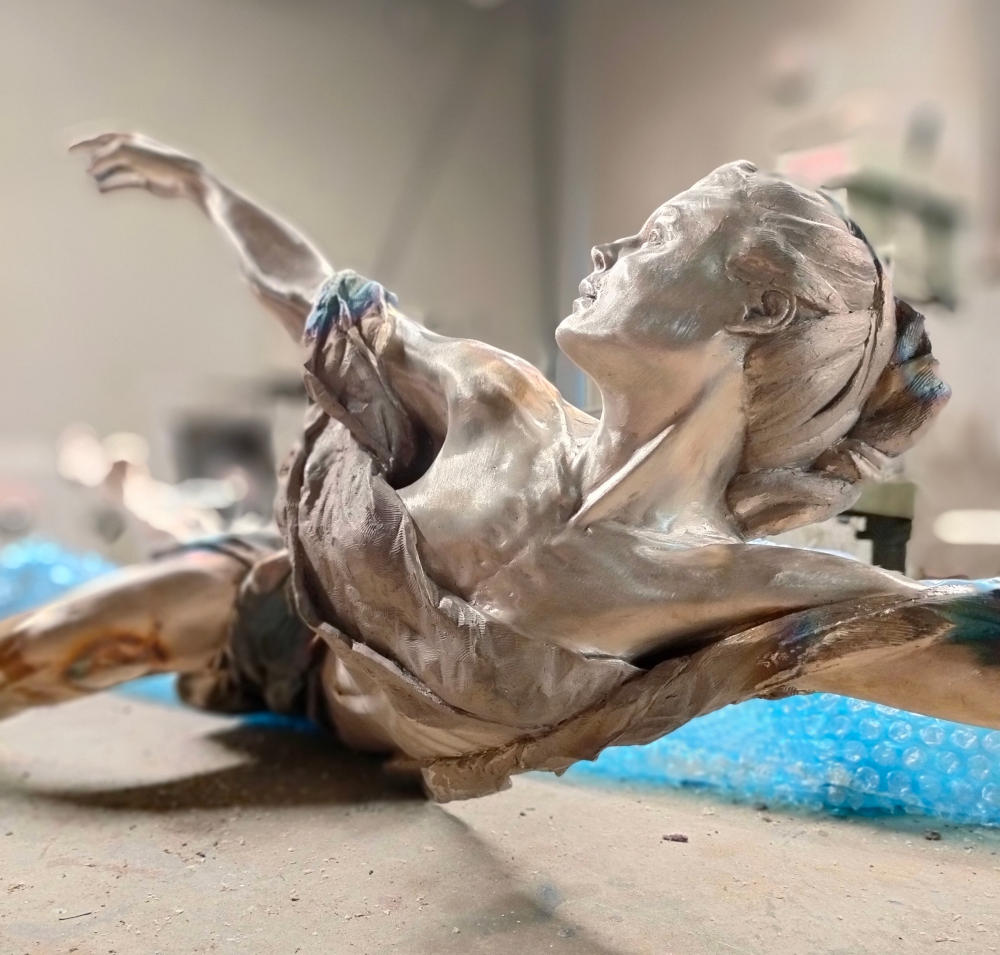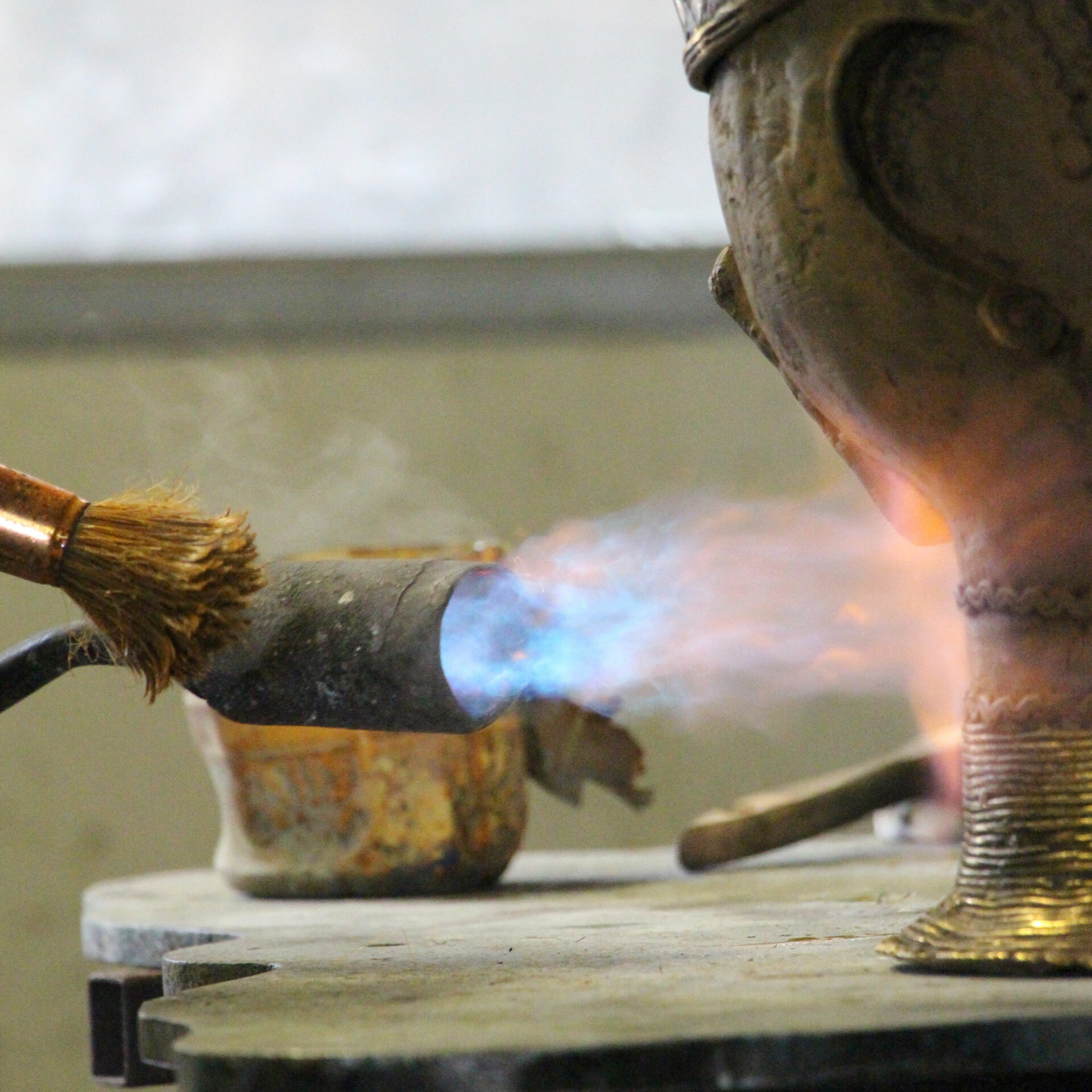In the Shadow of Wax: Immersion into the Alchemy of Bronze
Step into the heart of a 100% French craft, where the poetry of a collective creation unfolds — from the grace of a dancing model to the fusion of molten bronze, through an ancestral artisanal process.
It all begins with a meeting. I work with dancers — their bodies shaped by years of movement, precision, and presence. I offer them a situation inspired by a Sublime Maker. They dance, I observe, I film. Together, we search for the pose that tells a story. Once found, I study it from every angle, through drawing, to understand its lines of force, balance, and anatomy.
I then model the original sculpture in plastiline on a welded steel armature. I first establish the mass, then delve into the detail of the form. Every gesture, every muscular tension, every facial expression is reworked until presence and emotion emerge. I begin with a nude figure, then clothe it in drapery. I strive to bring forth a sensitive figure — a true, embodied presence.
Next, I make a silicone and resin mold, often in several parts. From this mold, a hollow wax replica is cast. I retouch the wax to recover all the delicacy of the original modelling. This long and technical stage is essential to what follows.
At this point, my partner, the Ilhat foundry near Toulouse takes over. They attach the wax channels and vents, then embed the wax in a refractory plaster mold. After drying, the mold is heated — the wax melts away, leaving a void. Into this void, bronze is poured at 1,200°C. Once cooled, the mold is broken and the raw bronze sculpture is revealed.
The bronze is then chased: welded, filed, cleaned, and sandblasted — a patient return to the original detail. Finally comes the patina: I apply heated nitrates to oxidize the surface, creating nuanced colors. The sculpture is inspected, waxed, and polished.
This slow and collective ritual is repeated for each edition. It requires rare mastery and time — and is the essence of a truly exceptional artwork.
Je réalise ensuite un moule en élastomère et résine, souvent en plusieurs morceaux. À partir de ce moule, on tire une cire creuse, que je retouche pour retrouver toute la finesse du modelé. Cette étape, longue et technique, est fondamentale pour la suite.
La fonderie Ilhat, près de Toulouse, prend alors le relais. Elle monte sur la cire les évents et canaux d’alimentation, puis la noie dans un plâtre réfractaire. Après cuisson, la cire fond : le vide laissé devient le futur bronze. Le métal en fusion (1 200 °C) est coulé. Une fois refroidi, le plâtre est brisé, le bronze libéré.
Commence alors le travail de ciselure – soudure, rectification, nettoyage, sablage – pièce par pièce, pour renouer avec la finesse du modelé.
Enfin, vient la patine, étape cruciale qui mobilise un grand savoir-faire : j’applique les oxydes à chaud, choisis selon les nuances souhaitées. La sculpture est inspectée, cirée, lustrée.
Ce rituel, lent et collectif, est à refaire pour chaque tirage. Il exige une maîtrise rare et justifie pleinement la valeur d’une œuvre d’exception.
